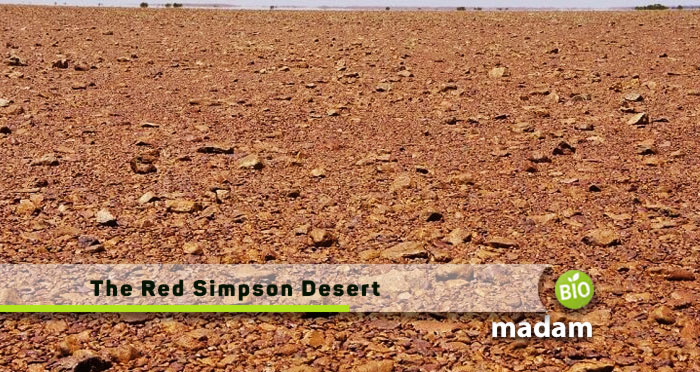Come discover the magic of the Simpson Desert, a hidden gem in Australia’s red outback. This beautiful desert, among the top 10 deserts of Australia, captivates with its huge rust-colored sand dunes that seem to go on forever. Stretching across parts of Queensland, South Australia, and the Northern Territory, the Simpson has been home to Aboriginal communities and drawn intrepid explorers for thousands of years. Under starry night skies, the desert is full of wonders waiting to be uncovered – awe-inspiring natural landmarks, tough desert plants and animals, and ancient Aboriginal rock art.
From the world’s longest sand dunes to ancient stories etched in stone, the Simpson protects many natural treasures for adventurous travelers willing to journey across its sea of sand. For all who love adventure, the Simpson opens a window to Australia’s untamed beauty.
Where is the Simpson Desert?
Hidden in Australia’s red center lies the magical Simpson Desert, a place of wonder and discovery. Sprawling across parts of the Northern Territory, South Australia, and Queensland, this remote desert feels worlds away from big city life. Its iconic red and rust-colored sand dunes stretch as far as the eye can see, untouched and quiet. Adventurous travelers who make the long journey here are rewarded with a one-of-a-kind outback adventure.
The Simpson desert invites visitors to slow down, embrace the solitude, and fully immerse themselves in the natural beauty of central Australia’s open spaces. With endless horizons and star-filled night skies, the Simpson Desert offers a tranquil escape into an iconic landscape.
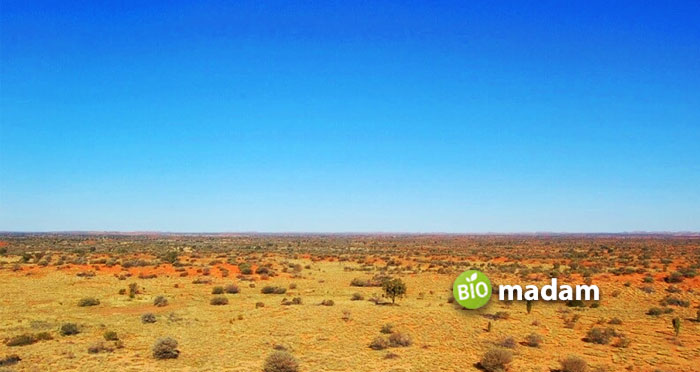
How Big is the Simpson Desert?
Encompassing 180,000 square kilometers in central Australia, the Simpson Desert captivates with its 1100 longitudinal dunes, each standing tall and proud. Reaching up to 90 meters in height, these dunes create a dynamic panorama stretching an astonishing 200 kilometers from southeast to northwest. Carved by the hands of time through wind and rain erosion, the desert’s landscape is adorned with unique landmarks.
Geographically, it straddles the borders of the Northern Territory, Queensland, and South Australia. The Simpson Desert proudly claims its spot as Australia’s fourth-largest desert, inviting adventurers to explore its ever-changing beauty.
Landmarks and Natural Features
- Rainbow Valley: A stunning sandstone bluff called rainbow valley is adorned with bands of color, coming alive in the early and late light of the day in the desert.
- Chambers Pillar: A towering 50-meter column, standing as a testament to the forces of erosion that have shaped it over millions of years.
- Old Andado Homestead: A historical site reflecting the distinctive way of life in a challenging desert environment, offering a tangible connection to the past.
- Mac Clark Conservation Reserve: A sanctuary safeguarding rare Acacia Peuce trees, found only in two other locations worldwide.
- Binns Track: An epic 10-day four-wheel-drive adventure, leading through the breathtaking scenery of the Northern Territory.
Flora and Fauna of the Simpson Desert
What Plants are in the Simpson Desert?
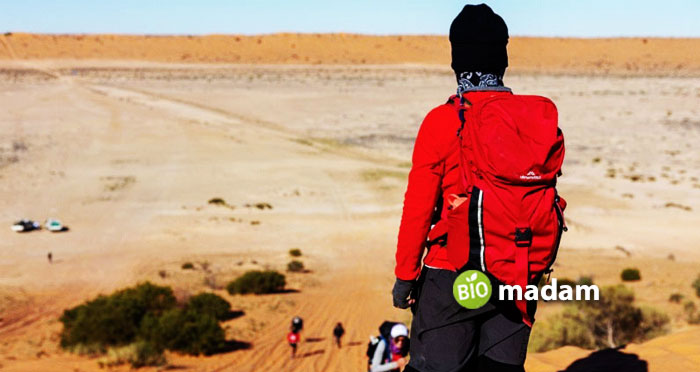
Diverse Plant Life
The Simpson Desert showcases a robust array of flora, boasting 780 plant species from 75 families. These include drought-resistant shrubs and grasses that have adapted to the harsh, arid climate.
Dominant Grass – Zygochloa paradoxa
Central to the desert’s ecosystem is the Zygochloa paradoxa grass, which plays a pivotal role in stabilizing the extensive dunes. Complemented by hardy spinifex and other resilient grasses, it creates a unique tapestry on side slopes and the sandy desert floor.
What Animals Live in the Simpson Desert?
Mammals
The Simpson Desert is home to 34 native mammal species, including unique inhabitants like the fat-tailed dunnart and ampurta. The varied mammalian residents contribute to the desert’s ecological diversity.
Reptiles
A staggering 125 reptile species thrive in the Simpson Desert, showcasing the adaptability of desert life. Notable reptiles include the sand goanna and central bearded dragon, both well-adapted to the arid environment.
Amphibians and Fish
Surprisingly, despite arid conditions, the desert hosts 22 amphibian species and 13 fish species. These species have found their niche in the limited water sources available.
Feral Pests
Camels and foxes are among the active feral cats present in the Simpson Desert. Though introduced, they have become part of the desert’s ecosystem, contributing to its complexity.
Some Other Animals
Below are more unique inhabitants of the Desert, adding to the charm and diversity, so explore this captivating world of Simpson Desert animals:
- Long-haired Rats
- Spinifex Hopping Mice
- Desert Mice
- Sand-Sliding Skinks
- Water-Holding Frog
- Spencer’s Desert Burrowing Frog
Climate and Weather Simpson Desert
The Simpson Desert boasts an extremely dry climate, with an annual precipitation of 5 inches (125 mm) or less in most parts. Despite its aridity, it’s best to visit this huge desert between May and October. The desert exhibits a unique phenomenon of periodic temporary flooding in specific areas. This occurrence results from rainfall outside the region flowing into the desert, adding an intriguing dimension to its climate.
Temperature extremes are a defining feature of the Simpson Desert, as is common in most deserts. During the day, temperatures can soar to levels posing a risk of dehydration and even death. Conversely, the absence of humidity and clouds allows for rapid cooling at night, with temperatures dropping to 4°C (40°F) or even lower. These climatic variations contribute to the challenging yet fascinating environment of the Simpson Desert.
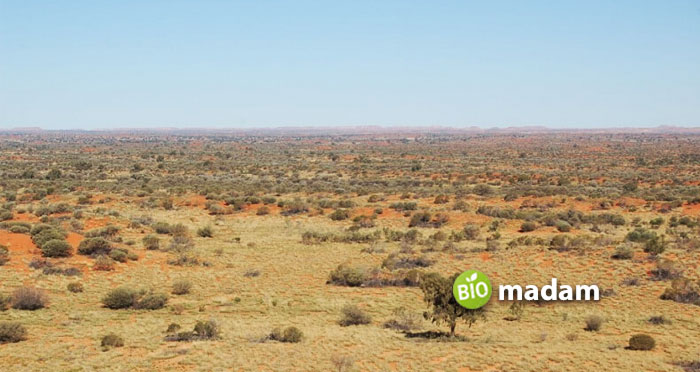
History and Exploration
The Simpson Desert echoes the footsteps of both ancient Aboriginal communities and European explorers. Aboriginal people have called this desert home for over 5000 years, leaving petroglyphs that tell stories of their beliefs. European exploration began with Charles Sturt in 1844, marking the first European encounter with this remote wilderness.
Simpson Desert Crossing
The Simpson Desert, boasting 1,136 parallel sand dunes, is the world’s largest of its kind, extending from Birdsville to Dalhousie in northern South Australia, covering a distance of 550 to 715 kilometers.
Typically closed from December 1 to March 15, the desert offers an exhilarating crossing experience, often undertaken from west to east. Two main tracks, the challenging French Line and the gradual Rig Road, provide different routes for adventurers.
Key tips for crossing the Simpson Desert include:
- Plan for at least 3–4 full days to navigate the challenging terrain of the desert. It’s essential to account for unexpected delays and changes in the itinerary.
- Decide between the French Line and Rig Road based on your vehicle capabilities and personal preferences. The French Line offers a more direct but challenging route with deep sand and dunes, while Rig Road is longer, with fewer dunes and better facilities.
- Depending on your preferences and logistics, consider starting your journey on the best vehicle, like the Blue Toyota Landcruiser, from Oodnadatta via the Pedirka Track or Mt. Dare leading to Dalhousie Springs.
- Obtain a valid Desert Parks Pass and equip your vehicle with a high-visibility flag.
- Communication is vital in the desert, so carry a UHF radio tuned to channel 10. Calculate your fuel needs based on the size of your group and the anticipated duration of your trip.
What to See in the Simpson Desert?
The Simpson Desert is not just a geographical wonder but a destination for seekers of adventure and culture. Here are some top places to visit around the big desert.
Dalhousie Springs: This natural oasis, adorned with warm, spring-fed pools, invites visitors to unwind or explore its serene surroundings. It is accessible and enjoyable for families seeking a peaceful dip as well as solo travelers in search of tranquility.
Purnie Bore Wetlands: These wetlands host a distinctive desert ecosystem, attracting a diverse array of birdlife. Family-friendly, they offer birdwatching opportunities, while solo travelers can relish the peaceful ambiance.
Approdinna Attora Knoll: A geological marvel, this knoll provides breathtaking panoramic views and stands as a testament to the forces shaping the desert over millions of years. Families with an interest in geology and solo travelers seeking scenic vistas will find it captivating.
Poeppel Corner: Marking the intersection of Queensland, South Australia, and the Northern Territory, Poeppel Corner captures the vastness and diversity of the region. Families can explore its geographic significance, and solo travelers may appreciate the unique landmark.
Big Red Bash: Recognized as the most remote music festival globally, the Big Red Bash seamlessly combines live music with the enchanting backdrop of the Simpson Desert. It is a family-friendly event for music-loving families and a cultural immersion for solo travelers.
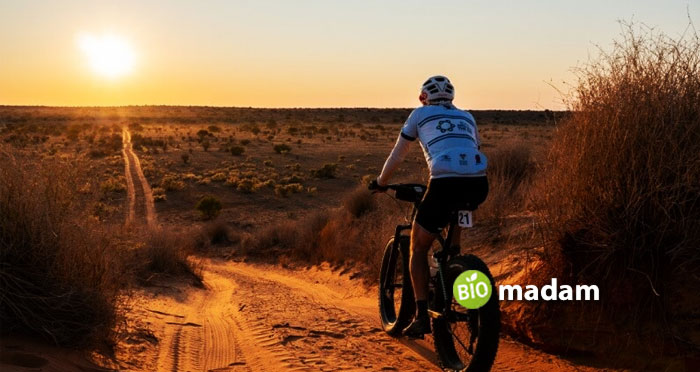
Simpson Desert Bike Challenge: Geared towards biking enthusiasts, this annual challenge invites families to spectate and solo travelers to participate in a thrilling biking adventure across the mesmerizing dunes.
Whether you’re exploring with family or embarking on a solo journey, the Simpson Desert offers a diverse range of experiences, ensuring that each traveler finds a piece of this arid wonder that resonates with their individual spirit.
Conclusion
Whether you explore this vast land on your own or with friends, the Simpson Desert leaves a lasting impression on everyone who visits. Just like the red sands that change over time, so do the feelings of those who come to this secluded place of natural beauty and history. Explorers come away with a new love for the wonders of the world, a deep respect for ancient cultures, and a humble understanding of the forces that shaped this desert marvel.
While it’s not an easy journey, the Simpson invites adventurers to discover life-changing views for those who are ready to uncover the secrets hidden in the dunes.

As a freelance journalist, copywriter, and editor, Rachel Truman crafts compelling stories across travel, food, family, lifestyle, and B2B. With a keen eye for detail, Rachel specializes in creating engaging branded content, making every word an adventure

